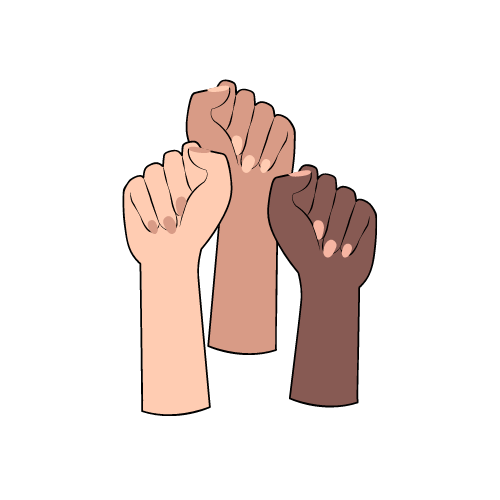Does the name Autumn Peltier ring a bell to you? And Hindou Oumarou Ibrahim? Isra Hirsi? What about Greta Thunberg? You’ve probably read or heard the last name, even if you aren’t particularly concerned about climate change. The other ones… I only heard about doing research for this post. If you are in the same situation as me, let me help. Those are the names of young climate change activists, like Greta. Unlike her, they are of color. Which brings me to the main point of this argument: climate change has been whitewashed.
It is a complex issue with many layers but I want to focus on the role that mainstream media plays in silencing the voices of climate activists of color. The case that brought the problem to my attention happened just last January, at the World Economic Forum in Davos. You might have heard of it. Vanessa Nakate, a (Black) climate activist from Uganda was cropped from a picture with four other (white) climate activists. She expressed her hurt on social media and Associated Press (AP), the original poster, put out a shabby statement about the photo and replaced the cropped version with the original. She was also mistaken for another black activist and misnamed by some other media outlet. As a black woman, I empathized with Nakate immediately on an emotional level. As a climate activist, I was once again reminded that ecology is also a playing field for colonialist practices and mindsets.

It can be argued that the cropping was purely of editorial nature and that Vanessa Nakate benefit from the publicity generated by the event. I argue that both statements reveal racial bias and a certain ignorance of environmental issues. The African continent has lower carbon emissions than Europe but bears the main brunt of climate consequences. A smart editorial crop would make sure to include the person whose demography represents the majority of those that suffer with climate consequences. The media is responsible for informing the public as accurately as possible about the issue of climate. Through text, and image it has the power to design people’s environmental perception and currently it is designing a skewed, whitewashed image for our consumption. Even without ill-intention, the media still reproduces ideas that white, Western activists are the authority on climate, the voices to be heard, and the faces to be seen, which is false.
The cropping of Nakate was compared by her to the cropping and silencing of a whole continent, and I agree with the statement. If people don’t see climate activists of color they’ll ignore our existence, our contributions and the problems faced by us. The Caribbean region, Africa, Asia, the Pacific – the global South – is strongly affected by climate change. Hurricanes, droughts, fires and floods are happening more often and more violently in our regions. It is important that media outlets reflect that Black, Indigenous, and People of Color (BIPOC) speak out too. We have knowledge too. Ignoring us and trying to nullify our actions is counterproductive to the struggle since we can bring solutions to issues raised by climate change. It is also unfair. Europe and North America have reached this level of development through exploitation of colonized people. These countries can afford to look away from the current situation and pretend it’s yet another black issue for white people to solve but that is incorrect. Look at recent California fires, in the USA, and the discussion that the situation could be less bad if indigenous forest management practices were used. Ignoring BIPOC voices has negative effects on the long term but white, middle class communities do not feel it immediately.

As the fourth power in democratic regimes, media should stand up to that role and make an effort to include all voices and ensure climate justice. But that is easier said than done because ‘the media’ is individuals that live in societies where structural racism and post-colonial practices are enforced. How can we change this? First, every white activist should be conscious of their bias and privilege and try to confront it. Second, make space for us! This is not a competition. In the end, everyone is affected by global warming. Ensuring that everyone is included, heard and respected (and not cropped) is the way to success.
I’ll finish by saying that this is not an attack on white climate activists. On the contrary. It’s a reminder that the fight against climate change is one for social justice which cannot come at the expense of people, regardless of race, gender, social status and religion. Excluding any community or part of society will only hinder environmental efforts. The fight for environmental protection doesn’t need white saviors, it needs all humans.

If you are interested, have a look at some of the pages I came by while doing research for this post. See you next time!
- The Fire Now: Anti-Racist Scholarship in Times of Explicit Racial Violence
- The erasure of Vanessa Nakate portrays an idealised climate activism
- Whitewashing climate activism limits its success
-
As a teenage climate activist of colour, I’m tired of being ignored by the world

